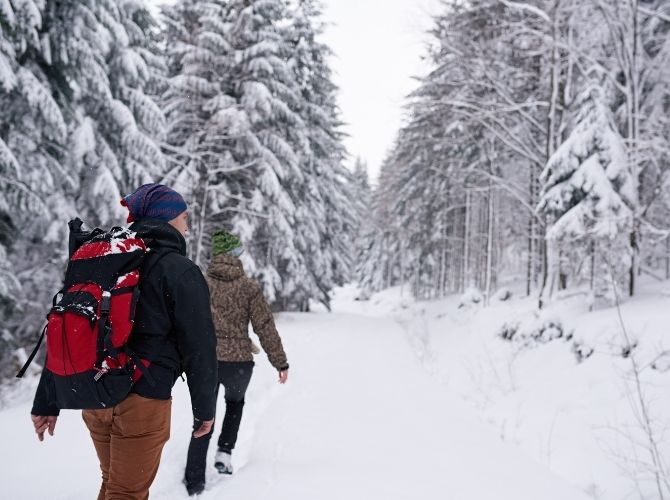Mount Monadnock is one of the most-climbed mountains in the world (Japan’s Mount Fuji is the first), and reaching the summit offers plenty of beauty, wonder, and glorious views, especially in winter. But don’t let the beauty distract you from being prepared for a safe and healthy hike. Here’s what to know before hiking in the snow.
Plan for Time, Prepare for Surprises
First off, be sure you can make your trip on the day you want to hike. The park is open year-round, but presently, due to more visitors and to ensure social distancing, visitors must make a day-use reservation. Also, keep in mind the fact that Monadnock’s trail requires a three- to four-hour roundtrip on average. Even during pleasanter weather, the journey can be challenging, and when snow falls and trails become blocked with ice, your day hike could be longer than usual.
Dress Warm, Dress Smart
As cold as it gets, hiking makes you work up a sweat, so it’s important to ensure you stay dry. Wet clothes can leech heat away from your body and induce hypothermia. Several sites recommend layering clothes, starting with polypropylene undergarments, a fleece or wool middle layer, and finally an insulated winter coat. As you climb your heat will rise, and when that happens you can remove or add layers in adjustment. A warm hat, gloves, and heavy hiking boots with insulated socks are also recommended. Protect your extremities from frostbite and the rest of you from hypothermia!
Get a Grip
Crampons and microspikes are a worthwhile investment for any icy mountain hike. They can be fitted onto your boots to provide greater traction on packed snow and ice. An ice ax is another handy tool to carry, particularly along the steeper and icier trails. You might not need it, but wouldn’t you rather have it just in case?
Stay Hydrated, Carry Snacks
Hiking in the snow and especially up Mount Monadnock, you’re probably getting twice the workout a pleasantly warm spring hike would bring. As mentioned above, just because it’s cold doesn’t mean you won’t sweat. Excessive sweating can lead to dehydration, exhaustion, and poor blood flow, which in turn, leads to frostbite or hypothermia. You may not be thirsty, but that doesn’t mean you shouldn’t stay hydrated. Healthy and portable snacks are also necessary, even on shorter hikes. Keep your energy levels up!
Bring a Buddy
Even on a pleasant winter’s stroll, it’s smart to be part of a team. In the event of an injury, inclement weather, or even a seemingly insurmountable obstacle, it’s good to have an extra pair of hands, legs, and eyes to ensure everyone has a fun and safe time on the trails.
“The woods are lovely, dark, and deep,” wrote Robert Frost, but Mount Monadnock, and other mountains and hills of New Hampshire, have their own challenges and sights to see. Consider this an abbreviated list of what to know before hiking in the snow. Discover some great hiking trails, for sunshine or snow, on our Hiking page!




